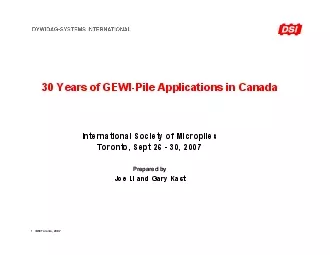PPT-Trevor Brown – University of Toronto
Author : ideassi | Published Date : 2020-06-22
Bslack trees Space efficient Btrees Problem Design an embedded device that implements a dictionary Element key amp value Operations Search Insert Delete Goals
Presentation Embed Code
Download Presentation
Download Presentation The PPT/PDF document "Trevor Brown – University of Toronto" is the property of its rightful owner. Permission is granted to download and print the materials on this website for personal, non-commercial use only, and to display it on your personal computer provided you do not modify the materials and that you retain all copyright notices contained in the materials. By downloading content from our website, you accept the terms of this agreement.
Trevor Brown – University of Toronto: Transcript
Download Rules Of Document
"Trevor Brown – University of Toronto"The content belongs to its owner. You may download and print it for personal use, without modification, and keep all copyright notices. By downloading, you agree to these terms.
Related Documents














